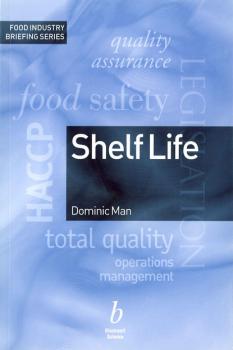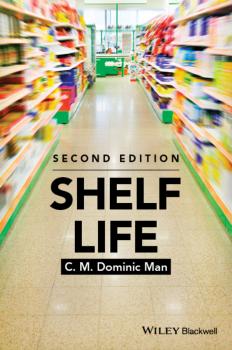ТОП просматриваемых книг сайта:
Dominic Man
Список книг автора Dominic ManАннотация
The crucial subject of the shelf life of food products affects the manufacture, processing, distribution, sale and consumption of all foods. It is a hot topic that is on the mind of every 21st Century consumer and cannot be ignored. Following the clear and concise style of the Blackwell Food Industry Briefing Series, Shelf Life allows the reader to dip in and discover or re-discover how to manage shelf life of foods looking at definitions, regulations, responsibilities, and the important task of determining the shelf life of food products. Separated into three sections, Shelf Life offers guidance on and answers to questions every person involved with food products should ask. It considers the mechanisms of food deterioration and the factors that can influence shelf life of foods and offers examples of how to determine the length of shelf life for different products. Dominic Man writes as a recognised expert with proven experience in this field, and enables any reader to tackle day to day problems related to shelf life of foods. Discussing the close relationship between food safety and shelf life this book is an essential resource for all food industry professionals and scholars who need to gain an overview of this extremely important subject. The book will appeal to senior students of food science and technology and related disciplines, and to practising food professionals such as product developers and quality assurance technologists. Concise, easy-to-use, quick reference book. Enable user to gain a quick working knowledge of Shelf Life. Written by an expert in the field with proven experience. Part of the exciting new series 'Food Industry Briefing'.
Аннотация
Shelf life, a term recognised in EU/UK food legislation, may be defined as the period of time for which a food product will remain safe and fit for use, provided that it is kept in defined storage conditions. During this period, the product should retain its desired sensory, chemical, physical, functional and microbiological characteristics, as well as accurately comply with any nutritional information printed on the label. ?Shelf life? therefore refers to a number of different aspects; each food product has a microbiological shelf life, a chemical shelf life, and a sensory (or organoleptic) shelf life. These categories reflect the different ways in which a food product will deteriorate over time. Ultimately the shelf life of a food product is intended to reflect the overall effect of these different aspects. Shelf life has always been an important facet of industrial food preparation and production, as food and drink are often produced in one area and then distributed to other areas for retailing and consumption. Globalised distribution and supply chains make it imperative that food should survive the transit between producer and consumer ? as a perishable commodity, food carries a high risk of spoilage. As such, a realistic, workable and reproducible shelf life has to be determined every time a new food product is developed and marketed; shelf life determination of food has become an integral part of food safety, quality assurance, product development, marketing, and consumer behaviour. Dominic Man?s Shelf Life, now in a revised and updated second edition, encompasses the core considerations about shelf life. Section 1 introduces shelf life, describes its relationship to food safety, and provides answers to the frequently asked questions around shelf life determination and testing which are a manager?s chief concerns. Section 2 covers the science of the various ways in which food deteriorates and spoils, including the physical, chemical and microbiological changes. Section 3 looks at shelf life in practice, using case studies of different products to illustrate how shelf life may be determined in real life settings. This book will be invaluable to both practitioners and students in need of a succinct and comprehensive overview of shelf life concerns and topics.


